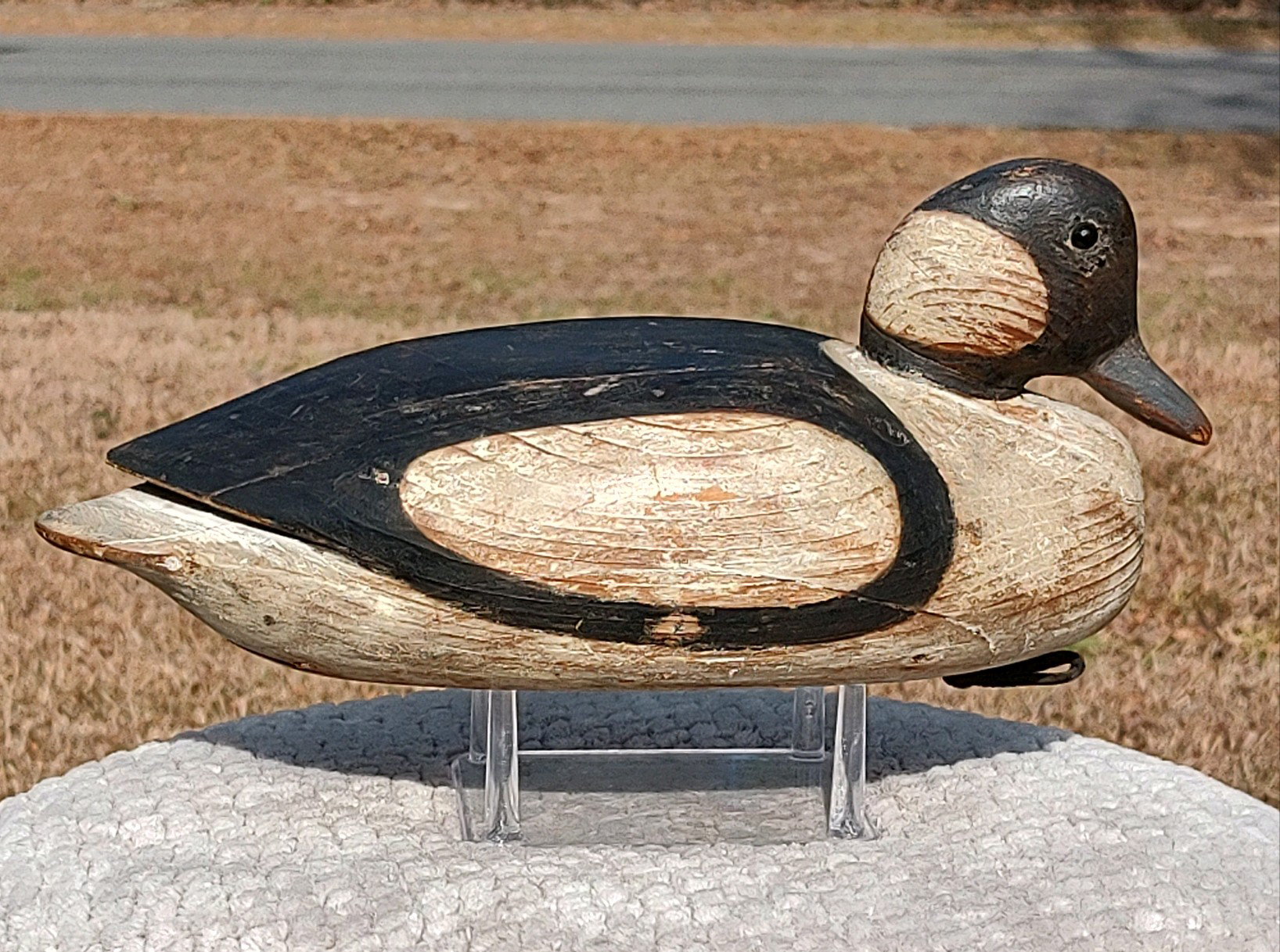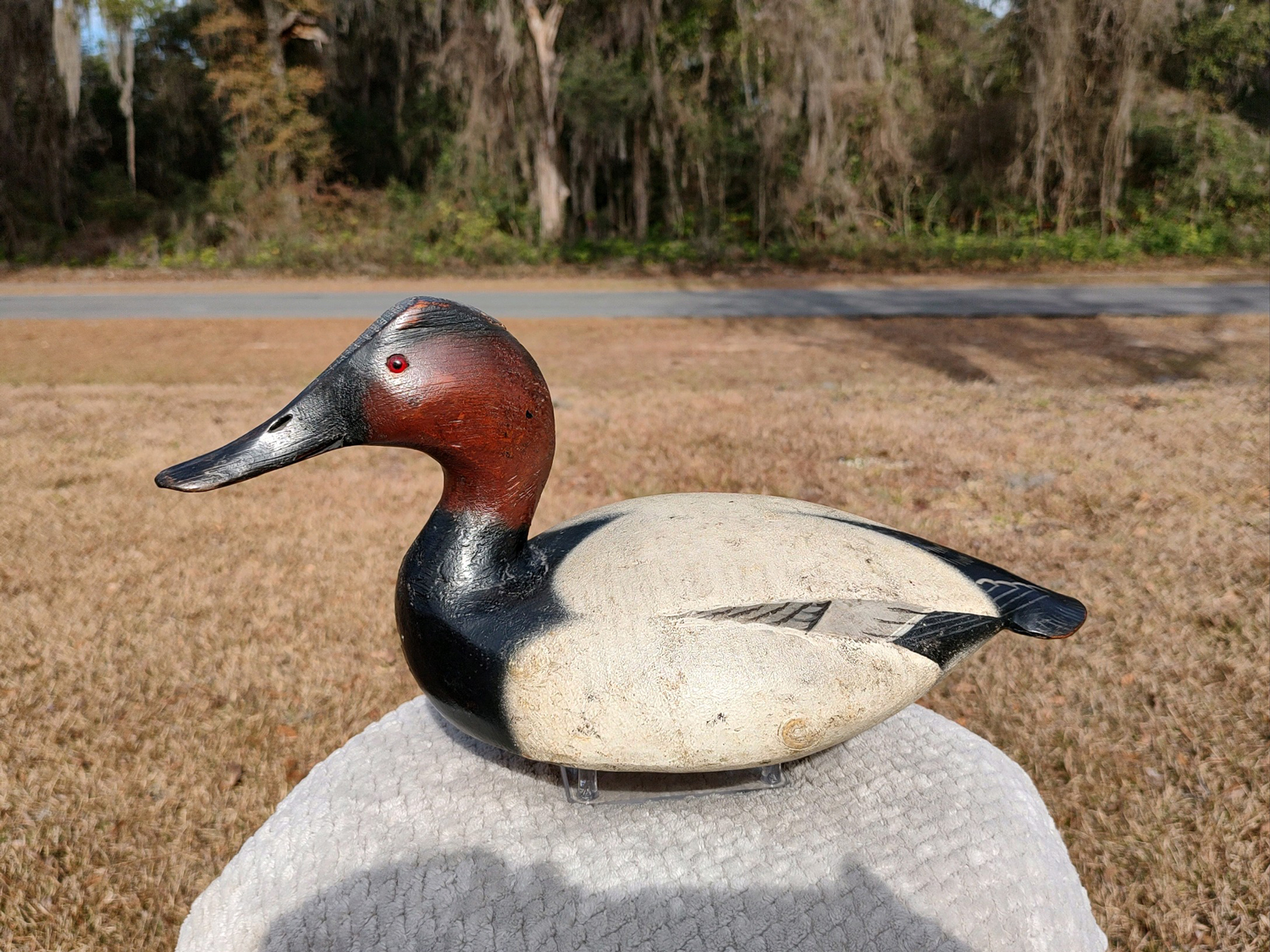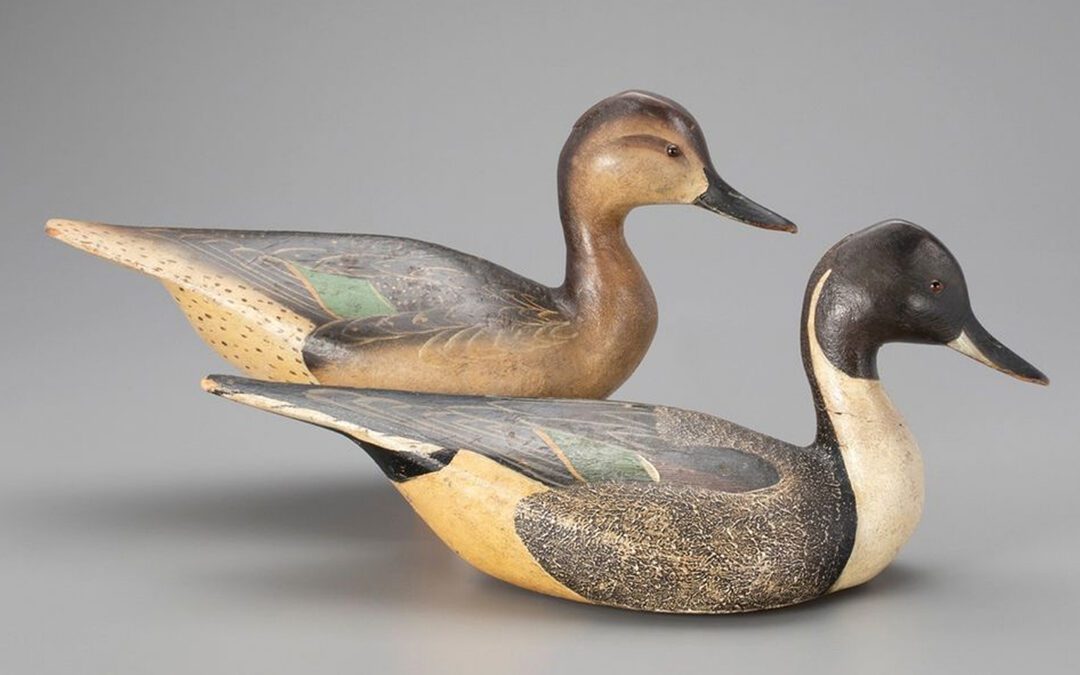Just for the purpose of answering this question, I will categorize decoys of ducks, shorebirds and geese into four groups.
1. Contemporary, which includes working birds and artistic forms.
2. Inexpensive old working decoys.
3. Medium range expensive.
4. Very expensive old birds.
In the first group, recently carved working decoys are enjoyable to hunt over, but their initial price of $100 – $300 is not likely to increase, especially as they are subject to wear and tear from hunting. Contemporary bird carvings, however, that are made for the shelf, occasionally increase in value. This is particularly true of carvings made by today’s best craftsmen. Some of their creations, such as decorative shorebirds and ducks that sold for $1,500 ten years ago, may bring $10,000 today. These are rare occurrences and a close examination of whose birds are escalating in value and whose are not would be wise. Of course, if you like the carving and are not buying just for investment, then you should acquire that which appeals and makes you happy.
Decoys in the second group, which includes inexpensive antique birds, increase in value at a snail’s pace. My first decoy was a pintail duck made by Wildfowler Company around 1945. It was in original paint and in excellent condition when I paid $10 for it in 1968. Today, 56 years later, it would sell for about $100. Not a lot of profit for 56 years.
A Mason Factory decoy made in 1925 that sells today for $800 might fetch $1,000 over the next ten years. Many duck hunters and folk-art enthusiasts began their collections with these lower priced birds and slowly seek higher priced pieces as their pockets deepen. Most collectors at this level are seeking additions simply for the love of the birds and the history behind them as opposed to investment.
The third group includes decoys in the $5,000 to $15,000 range. These birds are usually in original paint or they’re very old and rare, in which case a repaint or touch-up while the decoy was in use is acceptable to the knowledgeable collector. Original physical condition is also important, though a repaired broken bill or wing-tip by a professional restorer is acceptable. This group tends to be the best investment for those hoping to see most of their decoys go up in value. Usually, these decoys are more desirable than those in the first group. More important, collectors of the less expensive birds make up the largest group and most of them will gravitate to the next level as their bank accounts grow. This provides a large clientele of potential buyers for higher priced birds.
The fourth group could be compared to the stock market. Big money can be made or lost in a hurry. I have seen decoys sell at auction for $80,000 and two years later sell again for $60,000. The opposite is also true. A rare bird made by a craftsman in 1850 might have sold ten years earlier for $30,000 and today for $75,000.

A drake bufflehead in old working repaint. Made by Nathan Cobb Jr., c. 1865. Estimated value, $45,000.
There are far fewer collectors in the rarefied air of the $30,000 – $500,000 price range, and many factors influence the price a decoy might bring at auction or in individual sales. These buyers are usually older collectors who have plenty of expendable cash. Quite often, two buyers will be going after the same decoy. When the successful bidder leaves this life a few years later, there may not again be two collectors interested in the same bird at the same dollar amount it brought earlier. In this case, when the spouse of the deceased collector puts the decoy in auction, it may show a significant loss.
Another important factor to investment potential is time of possession. A great decoy purchased 30 years ago and brought back to market today is almost certain to bring a large profit. However, if that same decoy is sold again one year later, it could and often does show a drop in price.
So just how much will some decoys bring? In 2023, more than a dozen decoys sold at auction for six figures, the highest being a Canada goose for $594,000. The least expensive of the top 100 birds sold at auction this year was a canvasback for $25,200.
Decoy Magazine, edited and published by Joe Engers, is an excellent source of information on the history of carvers, upcoming auctions, decoy events and prices realized at auction. Their records show that 100 decoys have sold at auction for $189,000 or more. Sixteen of those birds each sold for a half-million or more, the highest being a merganser hen for $856,000. These figures do not include private sales.
No matter which group you fall into, as a collector you surely would like to see your treasured pieces appreciate in value. When evaluating a potential addition to your collection, remember to strive for original paint and physical condition. If the bird is very old and rare, then in-use repaint and some miner restoration is acceptable.

A drake canvasback in original paint by the Ward Brothers of Crisfield, Maryland. Made in 1936. Estimated value, $60,000.
Those carvers who have a large following will usually see more significant gains in their creations. For instance, the Ward brothers of Crisfield, Maryland, carved several thousand decoys in the 1930s – 1950s. They are well known and there are hundreds of collectors who own or seek their birds. For this reason, the decoys they crafted, especially their best work in the 1930s, is highly sought and continues to increase in value.
On the other hand, a group like the Nathan Cobb family, who lived on an island on the Eastern Shore of Virginia in the 1800s, carved only for their own use. Their birds are much rarer than the Wards’ and are old and often in repaint. Nathan Cobb’s family decoys bring higher prices than the Ward brothers’ due to age and limited quantity. Both, however, are good investments.
No matter, my first advice is to collect those pieces that really speak to you. If they are interesting to you from a historical, geographical, species or folk-art aspect, and you can afford the expenditure, then that’s the bird for you.

